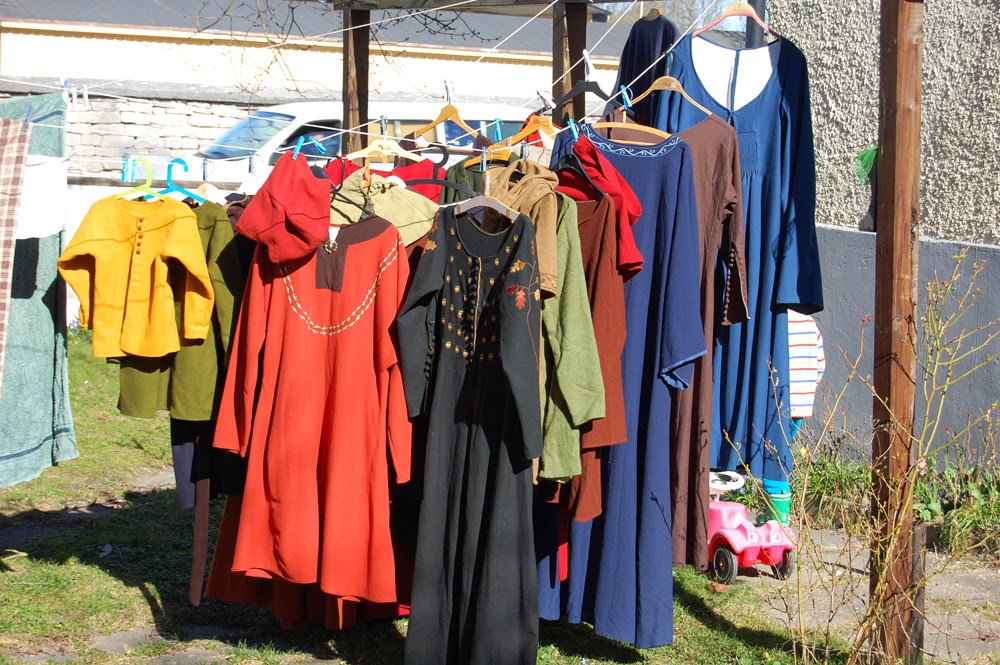Having had a hectic Autumn at work nothing much has been done, or so I thought. But being forced to go through all my pics and decide what to keep I noticed that there has been some sewing after all.
Here comes a brief show of two kruselers I made for others, one is sewn in small pipes and then starched, the other one is a softer look with lots and lots of neatly hemmed linnen strips, gathered and the secured.

First, cutting. In order to get a very straight, on the grain-cut, I first pull out threads in the linnen weave and then cut along the line.

When it is all cut I press them, preferably with a little spray starch, makes it easier to fold when hemming. Then comes hours after hours of hemming teeny tiny hems. The strips for the gathered kruseler are hemmed on both sides, then folded alongside the middle and gathered with two rows of parallell gather stitches. Then a small strip is sewn on and attached around the gathering creases to hold it all in place. This gives you a rather sturdy kruseler that can be sewn or simply pinned onto your veil.
The other veil demands a bit more measuring but does not need that long strips. I made the pipes 1 cm wide, then they will be filled out fine with an ordinary earplug to create the round shape when drying after being drenched in starch.
Both recipients were happy but I have not yet seen them properly worn, but I hope to see them come spring.





























